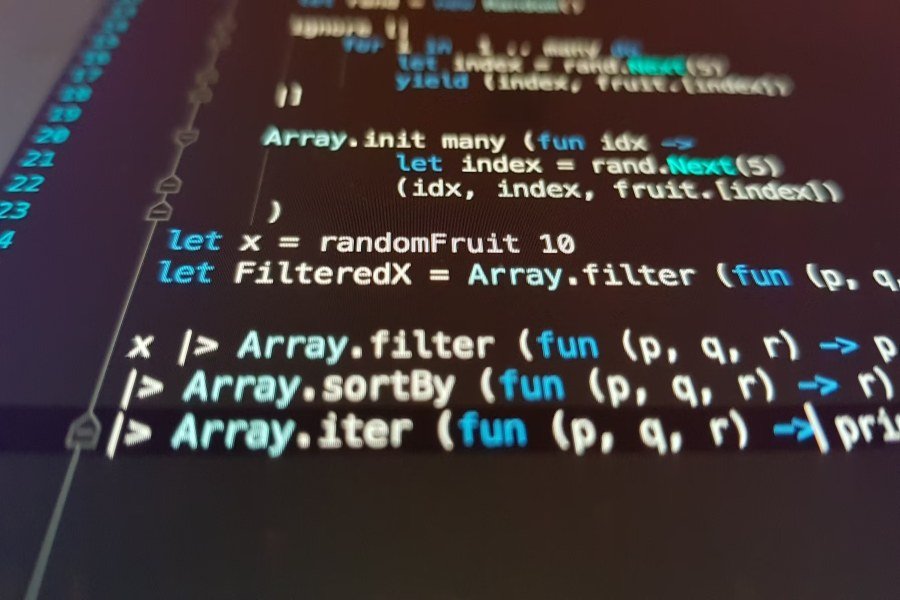
Full-stack development has always been a bit of a puzzle—one part design, one part logic, and a whole lot of code in between. Frontend developers focus on what users see and interact with, while backend developers build the systems that quietly power it all. Putting both together? That’s where the real challenge begins.
For a long time, that challenge meant writing endless lines of code, switching between frameworks, fixing bugs late into the night, and hoping everything would just… click.
But now, something’s changing—and it’s changing fast.
AI has entered the world of code in a big way. We’re not talking about simple suggestions or autocomplete. We’re talking about AI-driven code synthesis—where you give a description in plain language, and the AI turns it into working code across the stack.
From mobile apps to dashboards, from side projects to full-scale platforms, AI is helping developers go from idea to execution faster than ever before.
So what’s really going on behind the scenes? How is AI changing the developer’s day-to-day life? And more importantly—what does this mean for the future of full-stack development? Let’s take a closer look.
What Is AI‑Driven Code Synthesis?
At its core, code synthesis means automatically generating code based on rules or patterns. With AI in the mix, the system learns from massive amounts of code, user queries, and developer behavior to generate useful, production-ready code—even entire app components—from simple prompts.
Think of it like asking an AI:
“Build me a responsive login page with email and password fields, validation, and a forgotten password link.”
Seconds later, you have the frontend code written in React or Vue—structured, clean, and ready to integrate.
It’s not just about copying templates. AI models can now understand context, infer intent, and even fill in logic gaps. They can suggest database models, set up APIs, connect frontends to backends, and even recommend test cases.
How Full‑Stack Development Used to Work
Before AI joined the scene, full-stack developers juggled:
- Writing HTML/CSS for frontend layouts
- Crafting JavaScript or framework-based interactivity (React, Angular, Vue)
- Building backend logic using Node.js, Python, Ruby, Java, etc.
- Managing databases and data flows (SQL, NoSQL)
- Creating REST APIs or GraphQL endpoints
- Debugging both client and server
- Testing and deploying code
Every part required attention to detail and time. It could take weeks to build a full product, even with a team of developers.
And when things broke (as they always do), the blame game between frontend and backend became a familiar pattern in tech teams.
Now, Enter AI: A New Kind of Developer Assistant
AI-driven tools are now like smart co-pilots for developers. They do more than autocomplete code—they understand what you’re trying to build and help make it happen.
Here’s how AI-driven code synthesis is reshaping full-stack workflows:
1. From Idea to Code in Minutes
Imagine sketching an app idea on a napkin, describing it to an AI tool, and getting back a working prototype with both frontend and backend connected. Tools like Rocket.new (by DhiWise), which generate production-ready code from Figma to Flutter, Next.js, HTML, React, and more, are making this possible.
You type plain language like:
“Create a user registration form with email, password, and password confirmation. Store data in Supabase.”
Boom. Rocket writes the frontend component (React/Next.js or Flutter), sets up the API route, and provisions a Supabase backend—complete with database tables, authentication handling, and security best practices included.
2. Faster Backend Bootstrapping
APIs can be time-consuming to write, especially when dealing with input validation, error handling, and security.
AI now handles:
- Creating RESTful endpoints
- Structuring input/output
- Writing try/catch blocks
- Generating test cases
- Even scaffolding database schemas
This means developers can focus more on app logic and less on boilerplate.
3. Smart Frontend Generation
Frontend tools like DhiWise now convert Figma designs directly into frontend code using AI.
There are no more pixel-by-pixel recreations. Based on designs, developers get accurate HTML, Next.js or React/Flutter code, while AI ensures that buttons, forms, and layouts are responsive and functional.
You can even guide the AI with prompts like:
“Make this header sticky on scroll”
“Convert this card layout into a carousel”
And it listens. The result? Clean, editable code that gets you 80% there instantly.
4. Error Prevention and Bug Reduction
AI isn’t just about speed. It’s also about quality. By learning from billions of code samples, AI tools are incredibly good at catching common mistakes—before you even run your app.
They:
- Flag potential bugs in real time
- Suggest fixes for runtime errors
- Recommend more efficient or secure coding practices
- Catch typos, syntax issues, and broken links
This means less time for debugging and more time for building.
Real‑World Examples of AI in Action
Let’s break it down with some practical scenarios:
🔹 Building a Blog Platform
Before AI, you’d write the front end (posts, comments, forms), hook it to a backend, create a database schema, handle user auth, etc. It could take days.
With AI: You describe your app. Tools generate the frontend layout, CRUD APIs, database models, and even integrate with Firebase or MongoDB. You’re up and running in a few hours.
🔹 Creating a Dashboard for a Sales Team
Before AI, the Backend connects to a CRM or database, while the front end pulls data into graphs and requires dynamic tables, filters, and user roles.
With AI: You type:
“Build a sales dashboard showing total sales, new leads, and top-performing agents. Use chart components and role-based access.”
AI gives you chart-ready code using libraries like Chart.js or Recharts, sets up role guards, and connects it all.
Why Developers Aren’t Being Replaced
Despite how advanced this all sounds, AI isn’t replacing full-stack developers—it’s making them more powerful.
Here’s why:
- AI can generate code, but it needs human judgment. Not every AI output is perfect. Developers still need to refine logic, check edge cases, and meet business goals.
- Design and UX decisions still require people. AI doesn’t know your users like you do. Developers bring empathy and creativity that AI lacks.
- Custom logic is still hard for AI. Anything beyond basic CRUD (create, read, update, delete) operations still needs a developer’s brain.
AI handles the tedious parts so developers can focus on the creative and complex work.
Benefits of AI‑Driven Full‑Stack Development
The perks are huge—for solo devs, startups, and enterprises.
Speed
Apps that took weeks now take days—or even hours—to scaffold.
Accessibility
People with basic coding knowledge can now build full-stack apps with minimal help.
Reduced Errors
AI catches bugs early and often, reducing downtime and frustration.
Cost Savings
Less dev time = less cost, especially for MVPs and prototypes.
Collaboration
AI tools act as an extra pair of hands. They don’t sleep, get tired, or forget best practices.
What the Future Looks Like
We’re moving toward a world where developers can describe ideas in natural language and get full systems built—secure, scalable, and clean.
Here’s what’s coming next:
- Voice-to-code workflows: Describe your app out loud and get code generated.
- AI-driven testing: Not just writing tests, but predicting what should break—and fixing it.
- Self-optimizing backends: AI that rewrites your backend code to scale better or reduce costs.
- AI code reviewers: Instant pull request feedback that rivals human teammates.
- Agent-based development: Tiny AI bots that work asynchronously on specific parts of your codebase.
Challenges and Things to Watch
Of course, no new tech comes without hiccups. Some things to be aware of:
- Over-reliance: Trusting AI too much without reviewing code can lead to bugs or security issues.
- Data privacy: Feeding proprietary ideas into cloud-based AI tools needs caution.
- Tool fatigue: So many AI dev tools are popping up that it’s hard to pick the best.
But these are solvable problems. Like we learned to use Git, Docker, and cloud platforms, we’ll learn to use AI responsibly.
Let’s Build Smarter!
AI-driven code synthesis is not a buzzword—it’s a practical, powerful force that’s changing how we build software. For full-stack developers, it’s like getting an upgraded toolkit that cuts through complexity and lets you focus on what really matters: solving problems, shipping features, and building great experiences.
If you’re a developer, now’s the time to lean in. Learn how these tools work. Experiment. See what you can build in a day. AI won’t take your job—but someone using AI just might.
The future of full-stack development is not man vs. machine—it’s man with machine. And it’s already here.
